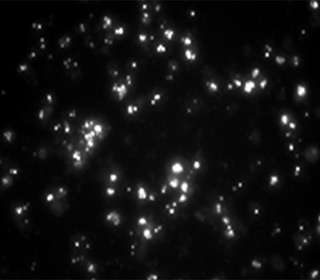Brain displays an intrinsic mechanism for fighting infection

(Medical Xpress)—White blood cells have long reigned as the heroes of the immune system. When an infection strikes, the cells, produced in bone marrow, race through the blood to fight off the pathogen. But new research is emerging that individual organs can also play a role in immune system defense, essentially being their own hero. In a study examining a rare and deadly brain infection, scientists at The Rockefeller University have found that the brain cells of healthy people likely produce their own immune system molecules, demonstrating an "intrinsic immunity" that is crucial for stopping an infection.
Shen-Ying Zhang, a clinical scholar in the St. Giles Laboratory of Human Genetics of Infectious Diseases, has been studying children with Herpes simplex encephalitis, a life-threatening brain infection from the herpes virus, HSV-1, that can cause significant brain damage. The scientists already knew from previous work that children with this encephalitis have a genetic defect that impairs the function of an immune system receptor—toll-like receptor 3 (TLR3)—in the brain. For this study they wanted to see how the defect in TLR3 was hampering the brain's ability to fight the herpes infection.
When TLR3 detects a pathogen it triggers an immune response causing the release of proteins called interferons to sound the alarm and "interfere" with the pathogen's replication. It's most commonly associated with white blood cells, found throughout the body, but here the researchers were examining the receptor's presence on neurons and other brain cells.
"One interesting thing about these patients is that they didn't have any of the other, more common herpes symptoms. They didn't have an infection on their skin or their mouths, just in their brains. We therefore hypothesized that the TLR3 response must be specifically responsible for keeping the herpes virus from infecting the brain and not necessary in other parts of the body," says Zhang.
The lab, headed by Jean-Laurent Casanova, collaborated with scientists at Harvard Medical School and Memorial Sloan-Kettering Cancer Institute to create induced pluripotent stem cells. Made from the patients' own tissue, the stem cells were developed into central nervous system cells that carried the patients' genetic defects. Zhang exposed the cells to HSV-1 and to synthetic double-stranded RNA, which mimics a byproduct of the virus that spurs the toll-like receptors into action. By measuring levels of interferon, Zhang showed that the patients' TLR3 response was indeed faulty; their cells weren't making these important immune system proteins, leaving them unable to fight off the infection.
Zhang also exposed the patients' blood cells to the virus and found that the TLR3 defect was not an issue there as it was in the brain—interferons were released by other means.
Because the toll-like receptors on neurons proved to be vital in preventing the encephalitis infection, the researchers concluded that brain cells use it as an in-house mechanism to fight infection, rather than relying on white blood cells. When its function was impaired, patients couldn't get better.
"This is evidence of an intrinsic immunity, a newly-discovered function of the immune system," says Zhang. "It's likely that other organs also have their own specific tools for fighting infection."
The researchers are putting together a pilot study to test an interferon-based treatment in patients with the encephalitis, believing it will help speed recovery and increase the survival rate when used alongside antiviral drugs. They'll also explore whether the brain displays an intrinsic immunity to other types of viral infection.
More information: Impaired intrinsic immunity to HSV-1 in human iPSC-derived TLR3-deficient CNS cells, Nature online: October 28, 2012. www.nature.com/nature/journal/ … abs/nature11583.html















